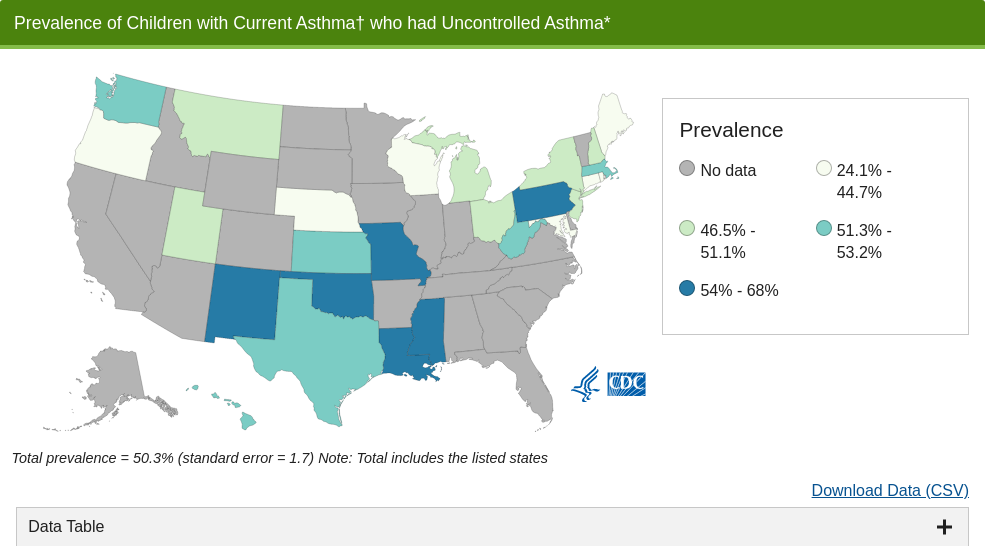Uncontrolled Asthma among Children, 2012–2014
Fifty percent of children with current asthma had uncontrolled asthma
Controlled asthma has a minimal impact on everyday living. Uncontrolled asthma with frequent and intense episodes of symptoms can have a significant cost to families and society because it may relate to an increased risk of an emergency department visit, hospitalization, and work and school absenteeism. Asthma control was classified as well-controlled or uncontrolled based on the national asthma guidelines.*
A total of 50.3% of children with current asthma† had uncontrolled asthma. The level of asthma control varies by demographic characteristics and state. The percentage with uncontrolled asthma was higher among children aged 0-4 years (59.1%) and blacks (62.9%). It also varies by state but does not seem to follow a specific geographic pattern. The percentage with uncontrolled asthma for children ranged from 24.1% in Rhode Island to 68.0% in Louisiana. (See maps above).

Abbreviation: NH, Non-Hispanic
| Characteristic | Prevalence (percent) |
95% Confidence Interval |
|---|---|---|
| Male | 48.2 | 43.9 – 52.6 |
| Female | 53.0 | 47.8 – 58.2 |
| 0-4 years | 59.1 | 48.9 – 68.5 |
| 5-11 years | 54.0 | 48.8 – 59.0 |
| 12-17 years | 43.2 | 38.6 – 47.8 |
| NH White | 45.4 | 41.8 – 49.0 |
| NH Black | 62.9 | 54.7 – 70.5 |
| Hispanic | 55.7 | 42.7 – 67.9 |
| NH Other | 51.0 | 41.8 – 60.2 |
Source: Behavioral Risk Factor Surveillance System (BRFSS)—Child Asthma Call-back Survey Data, 2012-2014
*National Asthma Education and Prevention Program Expert panel report 3: Guidelines for the Diagnosis and Management of Asthma, 2007. Available at: http://www.nhlbi.nih.gov/guidelines/asthma/asthgdln.pdf.
†Includes persons who answered “yes” to the questions: “Have you ever been told by a doctor, nurse, or other health professional that you had asthma?” and “Do you still have asthma?”
